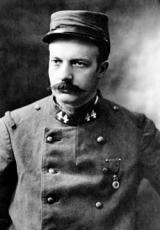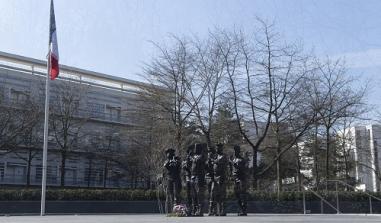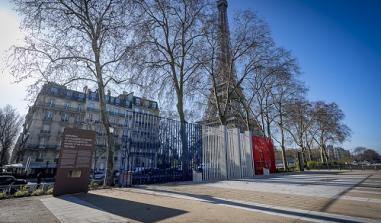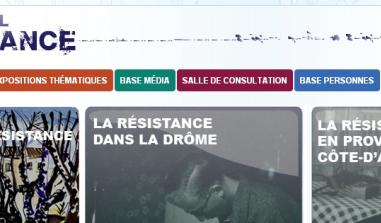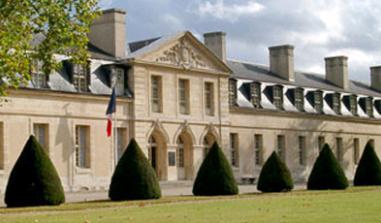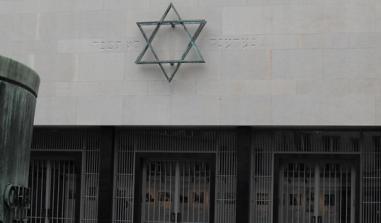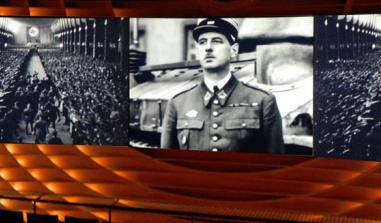Arc de Triomphe
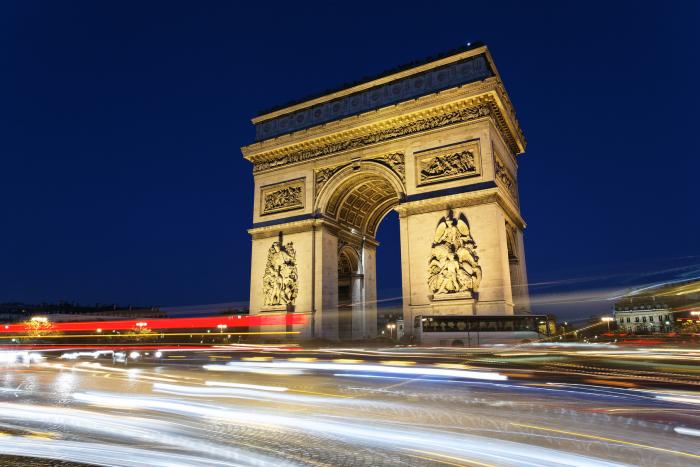
Arc de Triomphe. Photos © Frédéric Prochasson - Fotolia.com
There are as many different viewpoints of the Arc de Triomphe, than there are roads starting from Place Etoile...
Short history of the construction In February 1806, Napoleon I orders the construction of the Arc de Triomphe, in order to commemorate the victories of his armies. Finally the emperor decides to built it in Place de l'Etoile. The first stone of the monument is placed on August 15th 1806. The plans of this construction are those of the architect CHALGRIN. In 1870, in occasion to Napoleon's wedding with the archduchess Marie-Louise of Austria, he will built a trompe-oeuil of wood and painted material. Finished in time for the ceremony, the decoration gives an idea of what the monument will be once completed. CHALGRIN dies in 1810. He is replaced by Louis-Robert GOUST. At the end of the year 1813, the Arc reaches 19 meters height. The events of 1814 questions everything. Under the "Restoration", the works doze. Louis Philippe, who became king in 1830, decides to give life to this project again. The works start again and the Arc de Triomphe, dedicated to the Armies of the Revolution and to the Empire will be completed by the architect Guillaume - Abel BLOUET. The monument will be inaugurated on July 29th 1836.
The Monument The proportion of the Arc de Triomphe are enormous : it measures 49 meters height and exceeds 45 meters width. The arch of the two frontages reaches 20,50 meters of height for a width of 14,50 meters. The transversal frontages are pierced of an arch of 19 meters height on a width of 8,50 meters. The big frieze surrounding the four façades represents the great personalities of the Revolution and the Empire, or furthermore the return of the armies from Italy and Egypt.
The most imposing ornament is without any doubt the one formed by the four colossal groups erected on each pier of the two great façades : - Avenue de Champs Elysées : the Departure of the volunteers (left), still called La Marseillaise, of François RUDE and on the Triumph of the emperor (left) sculpted by Jean-Pierre CORTOT - Avenue de la Grande Armée, the two sculptured alto-rilievo represent the Resistance on the right, and the Peace on the left. On the interior surfaces of the big and small arches, the names of the generals and the great battles of the Revolution and the Empire are engraved. On the ground, near the grave of the unknown soldier, several bronze plaques commemorate important events of the contemporary history : the proclamation of the Republic on September 4th 1870, the return of Alsace-Lorraine to France on November 11th 1918 the call to arms on June 18th 1940. It also evocates the memory to the fighters and the resistant fighters of the Second World war, as well as the memory of "the dead for France" in Algeria, Tunisia and Morocco.
Climbing up the Arc de Triomphe Climbing up the Arc de Triomphe means climbing up 284 steps (an elevator gives access to handicapped persons), but it also means to have access to different museum halls and to the terrace. The big hall of the museum, situated under the terrace, exhibits a vast number of documents : engravings, drawings, photographs, models and various original parts of projects (for example the elephant), the construction and the decoration of the Arch, as well as great events, for example the return of Napoleon's I ashes (the 15th of December 1840),Victor HUGO's dead guard (May 29th 1885), the march of the Victory (on July 14th 1919), the arrival of the unknown soldier (January 28th 1921), the homage to General de Gaulle on the grave of the unknown soldier in a released capital (August 26th 1944). The terrace allows/gives a splendid view of Paris, the Champs Elysées, the Louvre, the Eiffel tower, the Dome des Invalides, and westwards the Arche de la Défense.
The Unknown Soldier The armistice, which puts an end to the First World war, is signed on November 11th 1918 in Rethondes (near Compiègne in Oise). Nevertheless the joy of the victory is plunged into mourning of 1 500 000 victims, for the majority very young. Soon in the small villages as well as in the big cities, monuments in memory of all the dead will be raised and in companies, in high schools and colleges commemorative plaques are carried out. On November 20th 1916, whereas the terrible Verdun battle is in the mind of everyone, F SIMON, President of the French Memory, has the idea to honour a soldier in the Panthéon, who like many others fought and died bravely for his fatherland. The project is finally adopted by the deputies on November 12th 1919. One year after, at the beginning of the month of November, the Parliament decides that the remainders of one of the unidentified soldiers, died during the war on the Field of Honour, will be buried under the Arc de Triomphe. Eight bodies of unidentified French soldiers, chosen among the different front sectors, are then transported in the Verdun citadel. November 10th 1920 at 3 p.m. the soldier Auguste THIN, son of a fighter, who died himself in the war, indicates by depositing a bunch of flowers on one of the coffins which will be carried to Paris. On November 1920, in the morning, after a ceremony at the Panthéon, the coffin is deposited in one of the halls of the Arc de Triomphe, arranged in a chapel of rest. On January 28th 1921, the coffin of the Unknown Soldier is buried in the centre of the principal arch, facing the Champs Elysées.
The Symbol of the flame Following the suggestion made early in 1921 by sculptor Gregory Calvet, then in October 1923 by the writer Gabriel BOISSY, the sacred flame under the Arc de Triomphe was lit for the first time November 11, 1923 to 18 hours by Andre Maginot, minister of war, while troops of the 5th RI presented arms as the band played Chopin's Funeral March." Since that date the flame was never extinct. Every evening at 6:30 p.m. the flame is revived by the representatives of the Association of Veterans or associations, whose good citizenship is recognized (such as the Red Cross). This ceremonial never stopped, not even during the occupation between 1940 and 1944. Obviously the Parisian high-school pupil and student, turn toward the flame and the tomb of the Unknown Soldier, during the processions defying the occupant. The Flame under the Arc de Triomphe evokes also for some people the Flame of the Resistance, of which a certain Charles de Gaulle once used to talk. Nowadays, the Tomb of the Unknown Soldier and the Flame of Memory symbolize for all the French, but also for the tourists of the entire world, the sacrifice of all those who died on the battlefield. The Flame of Memory also symbolizes the tribute paid to those who gave their lifes, to make us live in a free country. Lastly, since the tragic days of the occupation, the symbol of the flame found an additional vocation, the one of hope in the future and faith in the destiny of our country.
The ceremony of the revival Since November 11th 1923, each evening at 6:30 p.m. the flame is revived by the representatives of the Association, following a planning established by the Committee of the Flame. A precise ceremonial takes place. Each day, at least two members of the Committee, are appointed to accommodate the Associations and organise the ceremony. The associations meet either at the crossroad Champs Elysées/ Balsac, or at the top of the Champs Elysées, or directly at the Arc the Triomphe, when the participants are not too many. They are then taken under the Arc de Triomphe. At the top, the flower carriers lead the procession, followed by flag holders and the members of the association. They reach their final destination by taking the principal alley of the Champs Elysées. The participants take position on both sides of the Holy Flagstone and the flag holders take place in a circle on the west side of the flagstone. Before the ceremony the Commissioner and the Service Guard set up the flag of "the Flame", the bugle and the drum of the Republican Guard. Lastly the Commissioner of the flame and the different Presidents of the Associations join the Flagstone, they ascent the alley accompanied by the the call "The Flame". he delegations are then invited to lay their wreath, then while placing themselves near the flame, the Commissioner gives the sword to the president, who is invited to make the gesture of the revival. The call "To the Deaths" resounds, the flags are inclined, followed by a minute of silence. When a military melody (or other) is played, the call "to the Death" is followed by the refrain of the Marseillaise. The president is accompanied by the authorities and together they sign the Golden Book, then of a fraternal gesture they greet the flag holders, the Commissioners of the Flame, the members of the Associations and the guests aligned along the Flagstone. Everybody unite at the foot of the tomb and the musicians play the anthem "Honour of the Unknown Soldier". Then they are accompanied by the Commissioner in service, whereas the music plays "the Flame". This ritual is the same even when the General, President of "the Flame under the Arc de Triomphe" is present. The delegations are then invited to sign the Golden Book.
Arc de Triomphe Place de l'étoile 75008 Paris Acces Métro Charles de Gaulle-Etoile (1, 2, 6) RER A Charles de Gaulle-Etoile
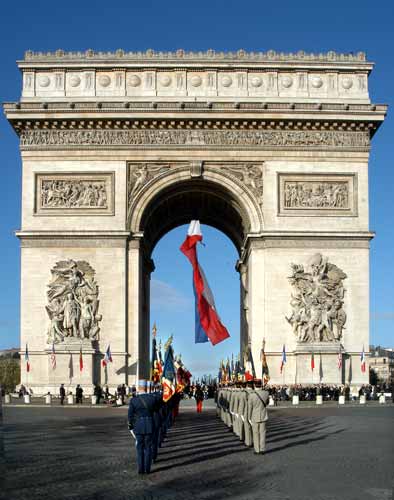
Cérémonie du 11 novembre. Photo de Jacques Robert
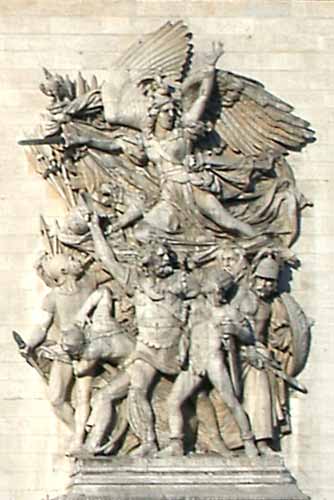
Détail de l'un des groupes colossaux de l'Arc de Triomphe. Photo de Jacques Robert
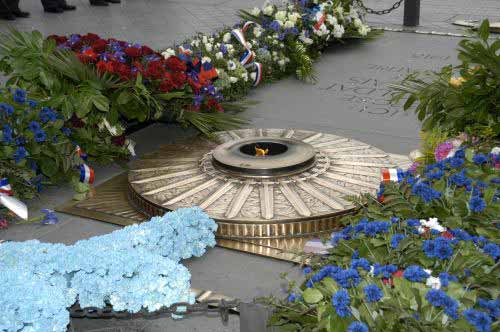
La flamme sur la tombe du Soldat Inconnu. Photo de Jacques Robert
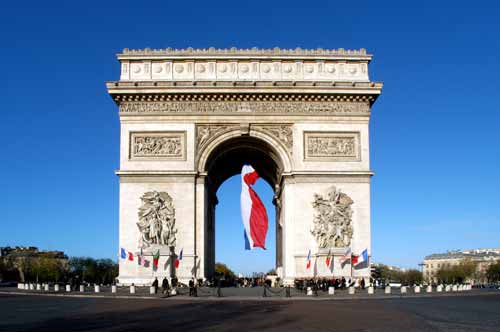
Arc de Triomphe vue de face. Photo de Jacques Robert
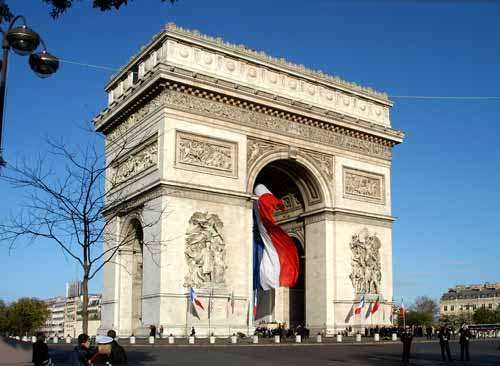
Arc de Triomphe, la cérémonie du 11 novembre. Photo de Jacques Robert
Practical information
place de l'étoile 75008
Paris
01 55 37 73 77
Plein tarif : 9,50 € Tarif réduit : 6 € Groupe adultes : 7,50 € (à partir de 20 personnes) Groupes scolaires : 30 € (20 € pour les ZEP) ; 35 élèves maximum. Gratuit : Moins de 18 ans (en famille et hors groupes scolaires) 18-25 ans (ressortissants des 27 pays de l’Union Européenne et résidents réguliers non-européens sur le territoire français) Personne handicapée et son accompagnateur Demandeur d’emploi
Du 1er avril au 30 septembre, 10h à 23h Du 1er octobre au 31 mars, 10h à 22h30
1er janvier, 1er mai, 8 mai (matin), 14 juillet (matin), 11 novembre (matin), 25 décembre


